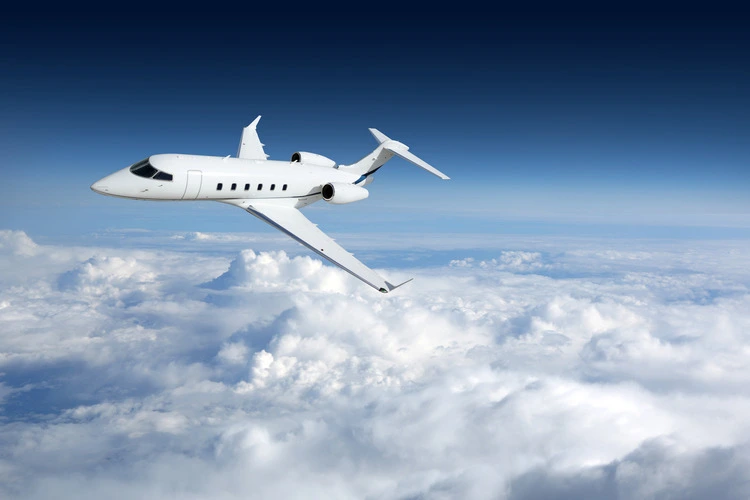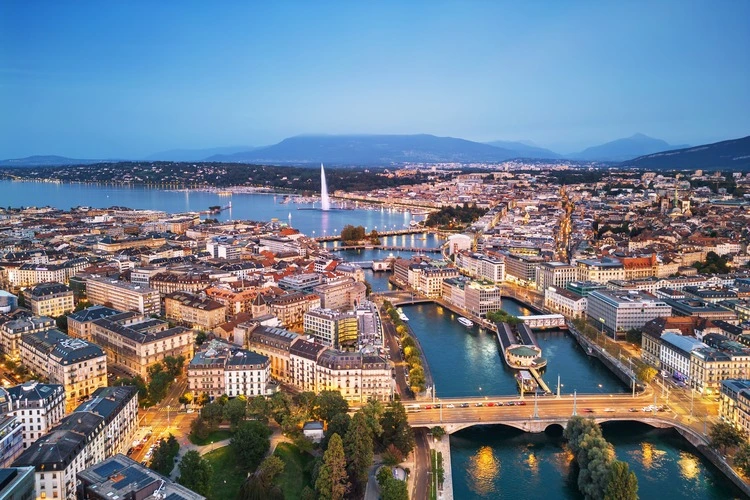
Private jet emissions are set to triple by 2050. Here’s the ugly truth behind luxury travel and how global efforts can curb its impact
By
Thirty minutes. That’s how long it takes to cycle between Blackbushe and Farnborough in Hampshire. Yet this journey – a modest commute for the average Briton – was in fact made via private jet in 2021-2022, one of the many short-haul trips taken across the world by various methods of luxury travel.
While a small fraction of the population are rich enough to use these jets – surveys in the UK report that just 15 per cent of adults are responsible for 70 per cent of the country’s flights – it is crucially the masses that experience the effects of unsustainable travel: weather events such as droughts, worsening heatwaves, flooding with catastrophic consequences across the world.
The ugly truth of private jet emissions
Airplane pollution plays a major role in global emissions. Planes produce vast quantities of CO2 emissions from burning fuel, as well as releasing nitrogen oxides that contribute to non CO2 effects, which make up to two-thirds of the climate impact of flying.
But before you despair, this doesn’t mean that your yearly vacation is the main culprit.

In fact, compared to commercial planes, private jets are between 5–14 times more polluting per passenger, and 50 times more polluting than trains. To put that into perspective, it would take the average UK citizen nearly 11 years to emit the same amount of carbon as a round-trip from London to New York on a private jet.
The use of private jets is on the rise too: a significant spike was reported this year in flights taken to European holiday hotspots during peak vacation time, with Geneva, Nice and Palma de Mallorca as the top destinations. A total of 117,000 private flights were recorded across 45 luxury destinations, producing 520,000 tonnes of CO2 emissions – the equivalent of enough electricity to power 100,000 homes.
Twelve per cent of these flights covered distances only up to a paltry 250km, meaning they could have been taken using ferries or trains. And when a single private jet flightsuch as these emits almost as much carbon as what an average European citizen would in an entire year – 4.46 vs 5.37 tonnes of CO2 – it becomes clear that something must be done to tackle just how damaging these flights can be on the environment.

Who’s using them?
Between the beginning of 2022 and September 2023, 200 jets belonging to a variety of celebrities, CEOs, oligarchs and billionaires spent a combined total of 11 years in the air. Combined, these 44,739 journeys produced emissions equivalent to that of 40,000 Britons.
The top five billionaire-linked aircraft emissions, according to this collected data, are from the Blavatnik family, the Murdoch family, the former CEO of Google, Eric Schmidt, the Sawiris family and former chairman of UFC Lorenzo Fertitta.
A Boeing 767 wide-body aircraft used by the Rolling Stones was one of the highest emitters of CO2, equivalent to a person taking 1,763 return flights from London to New York City in economy class. Aircraft owned by the billionaire owner of the Aston Martin Formula One team, Lawrence Stroll, topped the list for the most journeys of 15 minutes or less, and embarked a total of 1,512 flights.
It’s important to note that the owners may not have been present on every flight: some may have been rented out to friends and family or business associates. And around 40 per cent of private flights have no passengers, since they are flying around to pick up passengers. Yet the figures paint a startling reality of the scale of emissions from private flights.
A July 2022 report analysed flight data of celebrities using private jets to calculate those with the highest emissions. In the data collected by Yard, the average length of these flights were just 71.77 minutes, and only covered an average of 66.92 miles each flight.
At number one in the list of celebrities using private jets was singer-songwriter Taylor Swift, whose aircraft totalled 170 flights in just six months. This data was collected before the beginning of her Eras Tour that totalled 166 hours of flight time in its first US leg. Although a spokesperson for Swift claimed that the star had purchased more than double the carbon credits needed to offset all tour travel, some experts raise concerns whether these programmes accurately estimate their emission reductions.
Floyd Mayweather and rapper Jay-Z took second and third place on the list of highest celebrity emitters. Mayweather racked up 7,076.8 tonnes of CO2 between January and July 2022 through the use of his private jet, a staggering 1011 times more than the average person’s yearly total. Jay Z’s jet made 136 trips including a 35-minute flight between New Jersey and Boston, as well as 29-minute journey from North Carolina to Ohio.
Other figures who made the top ten list of 2022 included Oprah Winfrey, Kim Kardashian, Travis Scott and Steven Spielberg.
What can be done?
Currently in the UK, jet fuel isn’t taxed, but car-users must pay tax on the fuel that powers their vehicles. There’s also no equivalent vehicle tax for superyachts. So it’s not surprise that one of the solutions proposed to tackle the increasing use of luxury travel is to tax them. If successful, fair taxes on private jets and superyachts could raise £2 billion each year and help tackle rising emissions.
The charity Oxfam are currently running a campaign calling for similar taxes to be mandated in the UK for both private jets and superyachts. Reinvesting this tax into lower-income countries affected most by floods, storms, droughts, and rising sea levels would provide the necessary money required to adapt livelihoods and build suitable infrastructure that can withstand the impact of future natural events. The money from tax is also proposed to work on net-zero policies in the UK.
Already, Canada impose a 10 per cent tax on luxury aircraft and yachts, first enforced in 2022.

Elsewhere, other countries are entirely curbing some types of air travel. In 2023, France banned short-haul flights – any which have a rail alternative that takes less than two and a half hours – and Spain shortly followed suit, matching France’s legislation.
Other solutions include plans for regulators to permit only hydrogen or electric aircraft for private jet flights under 1,000 kilometres within Europe, by 2030.
For superyachts, eco-yachts that use renewable energy – such as solar and wind – are a viable alternative that reduces the environmental impact of luxury travel. As many yachts travel to remote or unspoiled locations, it remains imperative to keep these places exactly like that.
Ultimately, tackling emissions from private jets is an uphill battle. In Switzerland, a ticket tax for private flights departing from Europe was rejected in December 2023, that if successful would have seen a charge of CHF500 ($580) and CHF3,000 per private flight. These funds would have been allocated to climate protection measures, all-important ways to mitigate the growing demand for private flights.




